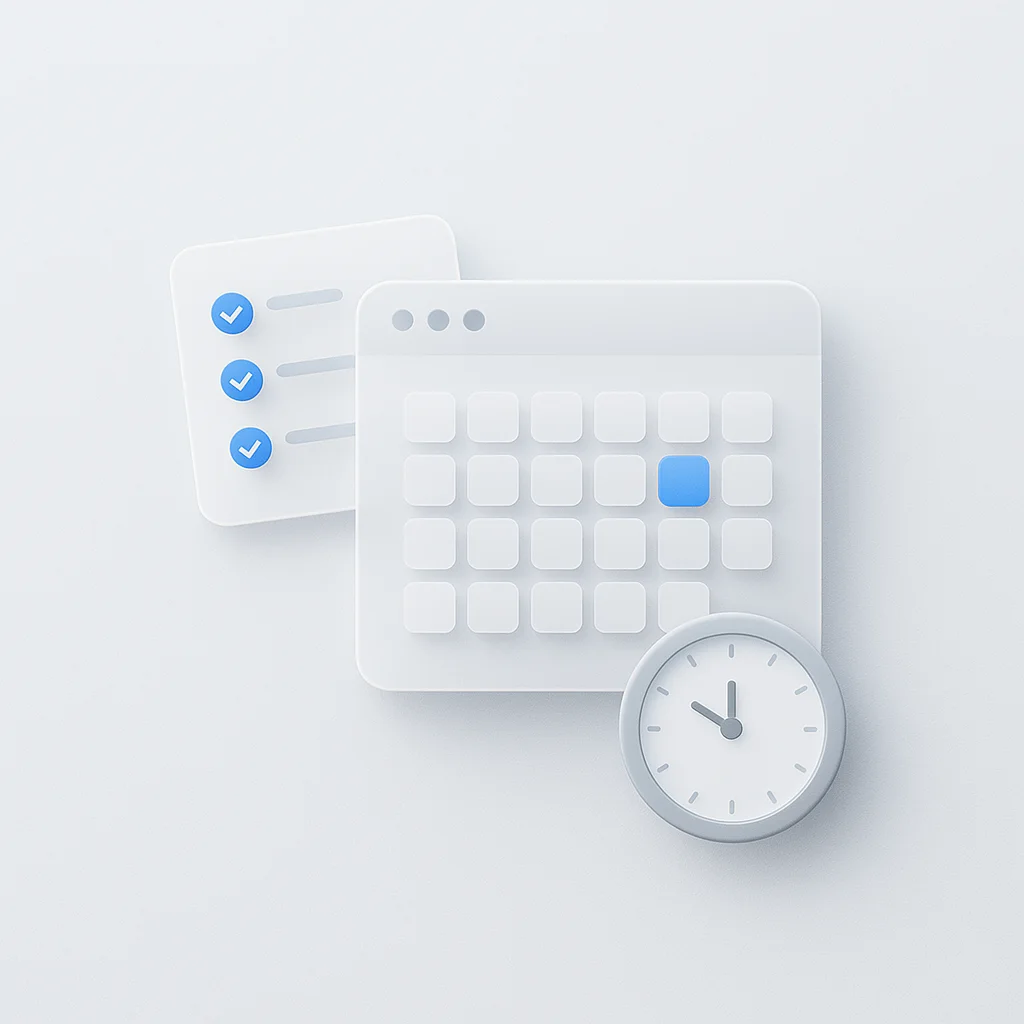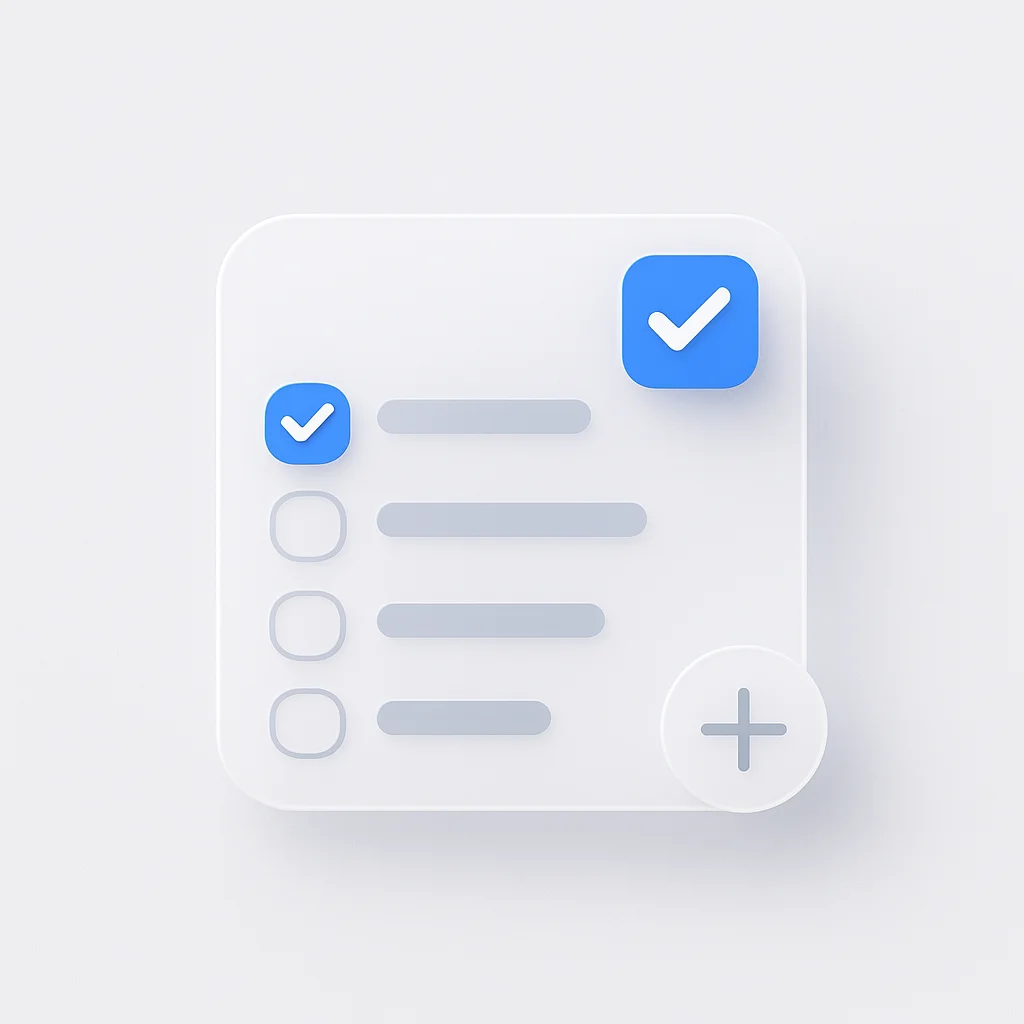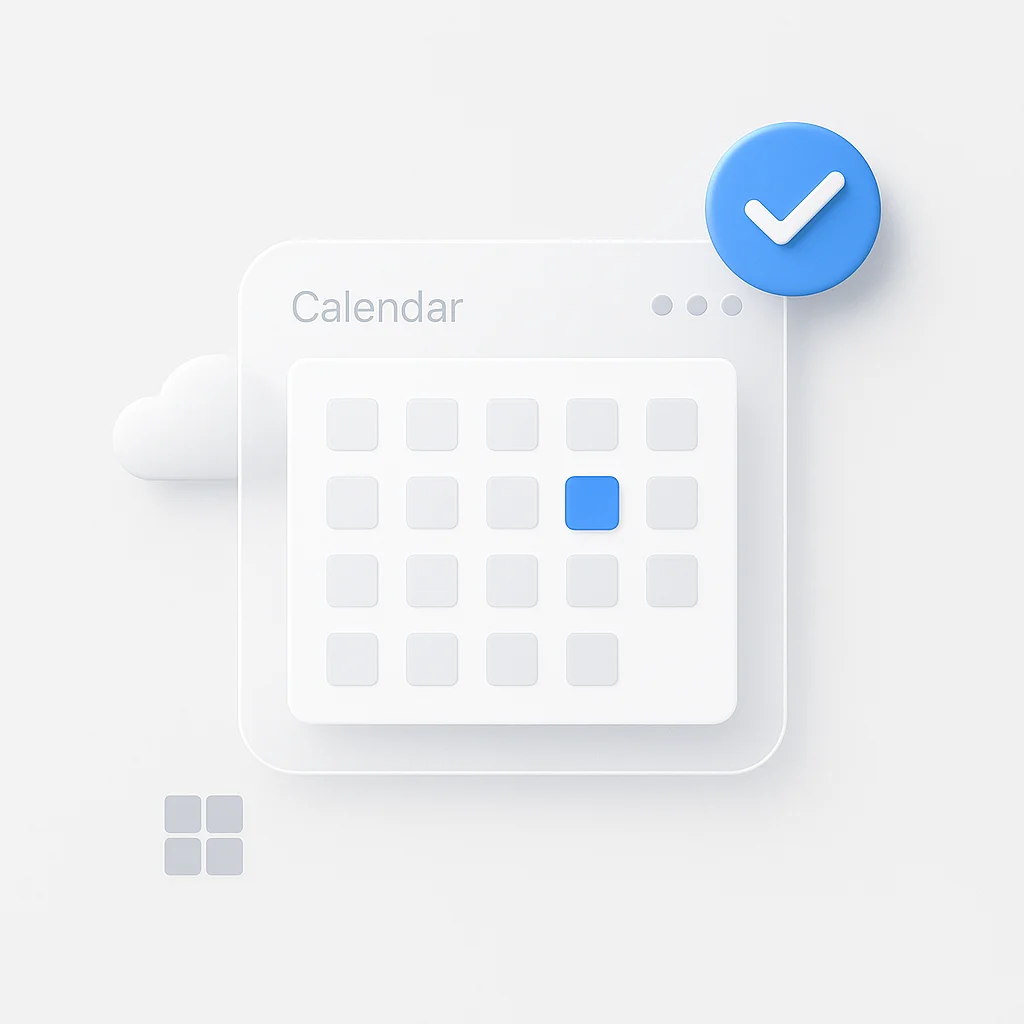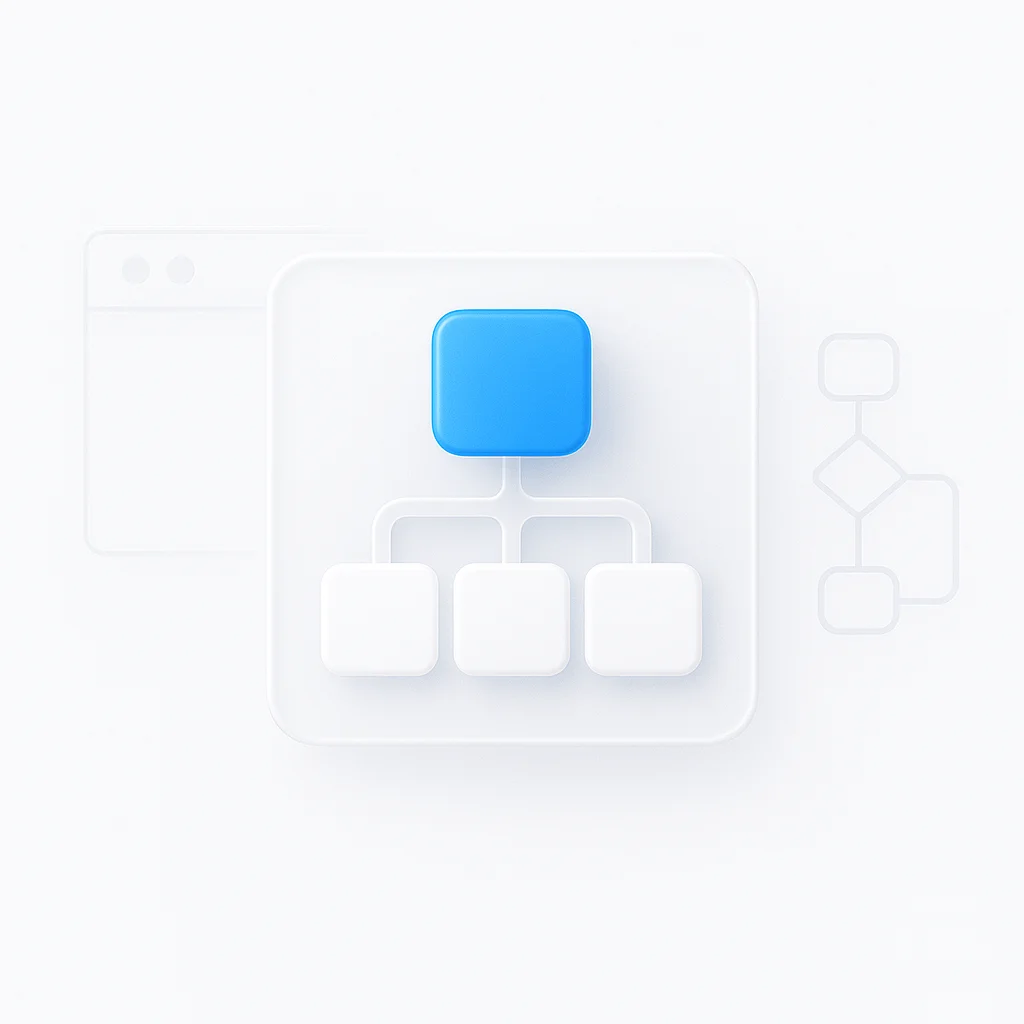Look at your calendar. How many hours are lost to meeting fatigue? More importantly, how many of those sessions result in clear, actionable progress?
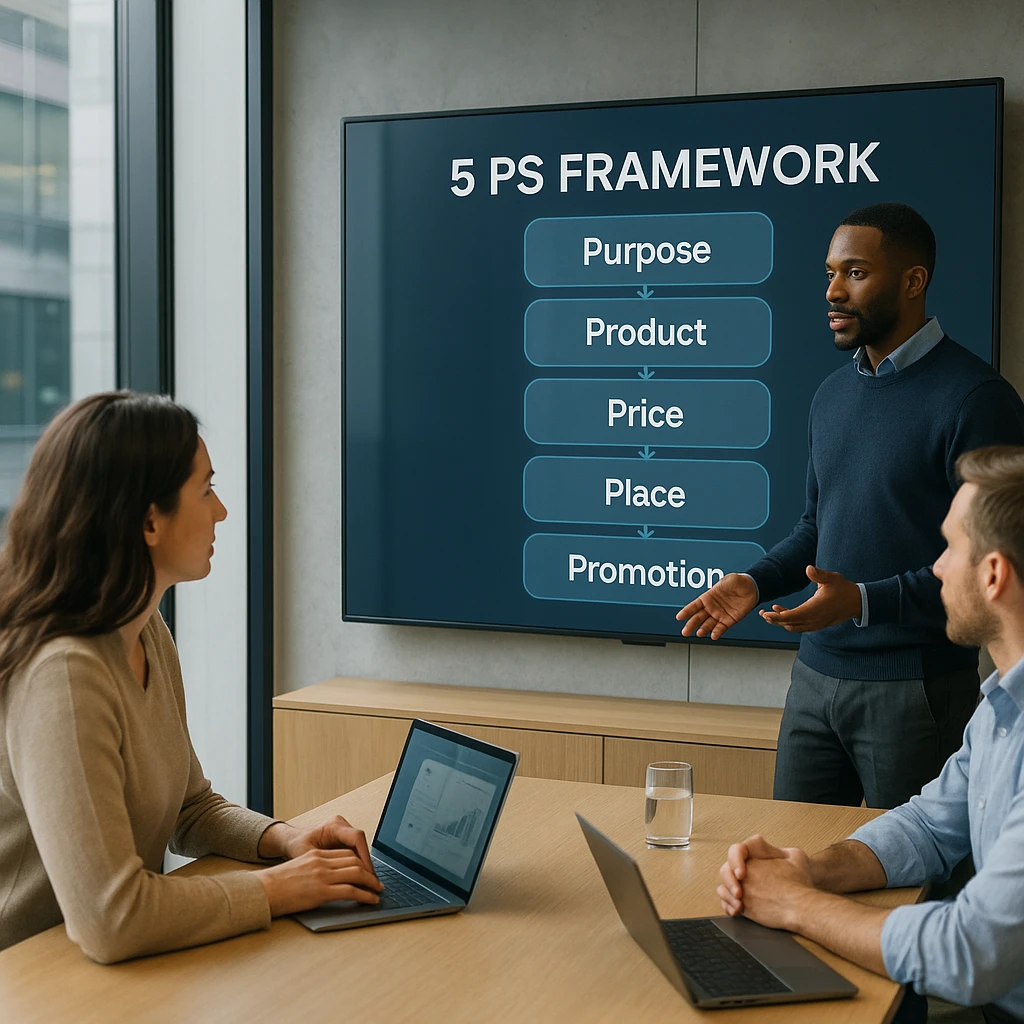
According to a recent study by Harvard Business Review, executives spend an average of 23 hours per week in meetings, yet 71% report most meetings are unproductive. This isn’t just about wasted time, it’s about lost momentum, drained energy, and diminished team morale.
But here’s the good news: running effective meetings is a learnable skill. This playbook provides a proven system to make every minute count, backed by research and real-world experience. By implementing these meeting productivity strategies, you’ll transform time-wasting sessions into focused, results-driven conversations.
The Golden Rule: Should This Meeting Even Exist?
The most powerful time-saving strategy? Eliminating unnecessary meetings entirely. According to McKinsey’s workplace productivity research, organizations could reduce meeting time by 30% by simply questioning each meeting’s necessity. Before scheduling your next meeting, ask these critical questions:
- Does this have a clear, specific objective?
- Could we achieve this through asynchronous communication?
- Who are the essential participants (hint: fewer is usually better)?
Our AI Meeting Minutes Generator can help capture and share information asynchronously, often eliminating the need for status update meetings entirely.
Phase 1: The Blueprint for Success (Before the Meeting)
Creating an Effective Meeting Agenda
A well-structured agenda is non-negotiable. Use the “5 Ps of a meeting” framework:
- Purpose: The single most important goal
- Product: The tangible outcome or decision
- People: The essential attendees only
- Process: The format (discussion, decision, etc.)
- Payoff: The benefit of achieving the purpose
Research from MIT Sloan shows that meetings with clear agendas are 40% more likely to achieve their objectives.
Pre-Meeting Preparation
Send these materials 24 hours in advance:
- Detailed agenda
- Pre-reading materials
- Clear expectations for preparation
Using ScreenApp’s AI Note Taker to prepare and distribute pre-meeting materials ensures everyone arrives prepared and informed.
Phase 2: Flawless Execution (During the Meeting)
The First Minute: Setting the Stage
Start exactly on time, this sets the tone for efficiency. Immediately:
- Restate the meeting’s purpose
- Confirm the desired outcomes
- Set ground rules for participation
Key Meeting Roles
Pro tip: Use ScreenApp’s Video Ask AI to automatically capture and transcribe key discussion points, freeing up participants to focus on the conversation.
The 25/50 Rule: A Calendar Hack
Schedule meetings for 25 or 50 minutes instead of 30 or 60. This built-in buffer:
- Allows time for bio breaks
- Prevents back-to-back meeting fatigue
- Improves punctuality for subsequent meetings
The Final Five Minutes: Action Items
This is crucial for meeting effectiveness. For each action item, specify:
- A single owner
- A clear deadline
- Success criteria
- Follow-up method
Our Meeting Minutes Generator automatically formats and distributes these action items, ensuring nothing falls through the cracks.
Phase 3: Ensuring Impact (After the Meeting)
Immediate Follow-Up
Within 2 hours of the meeting:
- Distribute meeting minutes
- Confirm action items with owners
- Schedule any necessary follow-up meetings
The In-Person Notetaker feature can help capture and organize these details in real-time.
The Follow-Up Loop
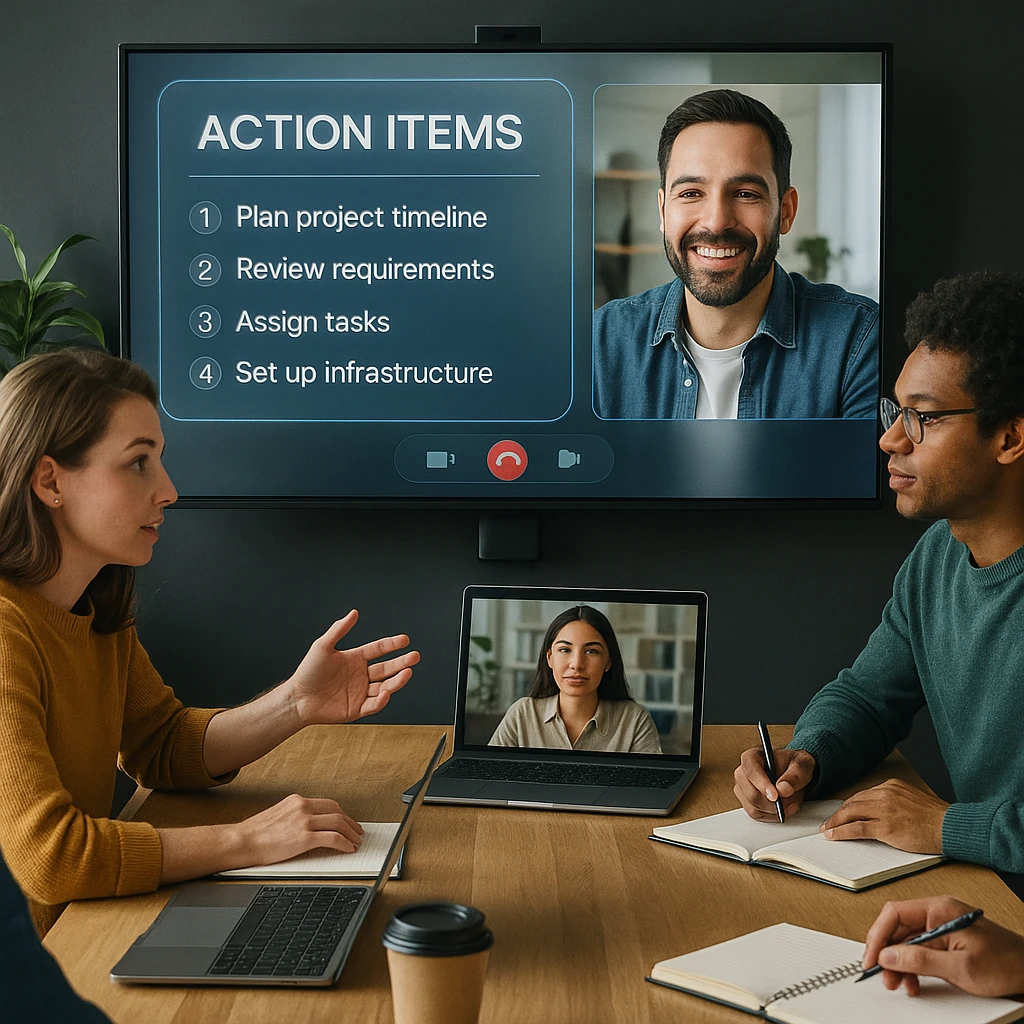
- Track progress on action items
- Send reminder notifications
- Schedule brief check-ins as needed
- Document completion of tasks
Continuous Improvement
After each significant meeting, ask:
- What went well?
- What could we improve?
- Should this be a recurring meeting?
Advanced Strategies for Meeting Excellence
🎯 Virtual Meeting Optimization
🚧 Dealing with Common Challenges
Problem: Off-Topic Discussions Solution: Use a “parking lot” list for important but tangential topics.
Problem: Late Arrivals Solution: Start on time, every time. Don’t recap for latecomers.
📈 Measuring Meeting Effectiveness
FAQ: Your Meeting Questions Answered
A: Purpose, Product, People, Process, and Payoff—each element ensures meetings stay focused and productive.
A: Suggest alternatives like email updates or asynchronous collaboration tools. Always acknowledge the invitation and explain your reasoning.
A: Key decisions, action items with owners and deadlines, major discussion points, and follow-up requirements.
A: Use a parking lot for off-topic items and refer to the agenda to maintain focus. Consider having a private conversation about meeting effectiveness.
A: Use asynchronous tools like ScreenApp's AI Note Taker for updates, or implement a written standup format.
Reclaim Your Calendar, Reclaim Your Day
Productive meetings don’t happen by accident they’re the result of deliberate planning, skilled execution, and consistent follow-up. Start by implementing just one strategy from this playbook, perhaps using an agenda for every meeting, and build from there.
Remember: every minute saved in meetings is a minute gained for meaningful work. Make them count.
